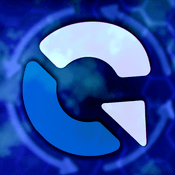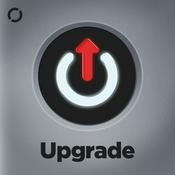536 episódios

Page Tables
15/12/2025 | 46min
Page tables provide the mapping between virtual memory and physical memory for each process. This means it needs to be as efficient and as fast as possible. I explore the inner workings of page tables in this episode.0:00 Intro2:00 Virtual Memory ⁃ ⁃ 8:00 MMU10:00 Page Tables ⁃ ⁃ ⁃ ⁃ ⁃ ⁃ ⁃ 11:30 Single Table Byte Addressability ⁃ ⁃ ⁃ ⁃ ⁃ ⁃ ⁃ ⁃ 16:00 Single Table Page addressability ⁃ ⁃ ⁃ ⁃ ⁃ 19:00 Multi-level Paging (Radix tree) ⁃ ⁃ 31:00 Huge Tables ⁃ ⁃ 33:00 TLB ⁃ ⁃ Summary

CPU and Kernel Page Faults
24/11/2025 | 48min
Page faults occurs when the process tries to access a memory that isn’t backed by a physical page kernel raises a fault which loads a page. It happens on first access, stack expansion, COW, swap and much more. However it comes with a cost. In this episode of the backend engineering show I dissect the need and the cost page faults in the kernel. 0:00 Intro 4:00 Virtual memoryAbstraction of physical memoryMemory sharingAllow more processes to run , unused go to diskNuma, kernel can place memory near the cpu12:00 VMA areasText/code Data BSSHeapStack19:50 Kernel mode25:30 What is a Page fault?30:30 First access page fault33:00 Stack Expansion page fault34:30 CoW page fault38:00 Swap page fault39:39 File backed page fault40:29 Permission page fault 45:30 Summary

Amazon US-EAST-1 Outage in Details
31/10/2025 | 24min
On October 19 2025 AWS experienced an outage that lasted over a day, 10 days later we finally got the root cause analysis and we know exactly what caused the DNS to fail0:00 Summary 5:30 How did Dynamo lost its DNS?13:41 EC2 Errors 16:16 Network Load Balancer ErrorsRCA here https://aws.amazon.com/message/101925/

Graceful shutdown in HTTP
17/10/2025 | 25min
There are cases where the backend may need to close the connection to prevent unexpected situations, prevent bad actors or simply just free up resources. Closing a connection gracefully allows clients and backends to clean up and finish any pending requests. In this episode of the backend engineering show I discuss graceful connections in both HTTP/1.1 via the connection header and HTTP/2 via the GOAWAY frame. 0:00 Intro4:58 Why shutdown connection? 6:46 HTTP/1.1 Graceful shutdown12:26 Cost of HTTP/2 17:40 HTTP/2 GoAWAY frame23:40 SummaryLinkshttps://www.youtube.com/watch?v=fVKPrDrEwTI&t=1s https://chromium.googlesource.com/chromium/src/net/%2B/master/socket/client_socket_pool_manager.cc#76https://issues.chromium.org/issues/40555364https://issues.chromium.org/issues/40501721

Postgres 18 gets Async IO
03/10/2025 | 41min
Postgres 18 has been released with many exciting features such as UUIDv7, Over explain module, composite index skip scans, and the most anticipated asynchronous IO with worker and io_uring mode which I uncover in this show. Hope you enjoy it0:00 Intro1:30 Synchronous vs Asynchronous calls3:00 Synchronous IO6:30 Asynchronous IO10:00 Postgres 17 synchronous io 17:20 The challenge of Async IO in Postgres 1820:00 io_method worker23:00 io_method io_uring29:30 io_method sync 31:08 Async IO isn’t done! 31:30 Support for backend writers32:36 Improve worker io_method33:00 direct io support 37:00 Summary
Mais podcasts de Tecnologia
Podcasts em tendência em Tecnologia
Sobre The Backend Engineering Show with Hussein Nasser
Ouça The Backend Engineering Show with Hussein Nasser, MacMagazine no Ar e muitos outros podcasts de todo o mundo com o aplicativo o radio.net

Obtenha o aplicativo gratuito radio.net
- Guardar rádios e podcasts favoritos
- Transmissão via Wi-Fi ou Bluetooth
- Carplay & Android Audo compatìvel
- E ainda mais funções
Obtenha o aplicativo gratuito radio.net
- Guardar rádios e podcasts favoritos
- Transmissão via Wi-Fi ou Bluetooth
- Carplay & Android Audo compatìvel
- E ainda mais funções


The Backend Engineering Show with Hussein Nasser
baixe o aplicativo,
ouça.



































